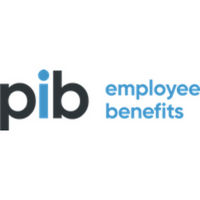Top tips on how to use data to improve gender equity
Despite progress in recent decades, inequity, especially in relation to gender, remains top of the corporate agenda. The well-publicised gender pay gap still sits at 14.9%, while the gender pensions gap is estimated to be more than double that at 35%.
Research from PIB’s 2023 Mind the Gap Survey also shows a disparity between benefits offerings – 20% of female employees do not get any employee benefits, vs only 13% of male employees.
Beyond the basics, there are clear areas of opportunity where employers could do more to reduce inequality and fill support gaps. But to provide this much-needed support, employers need to understand requirements and available provision.
1. Collect data
To address gender equity issues, companies must start by collecting comprehensive data – both qualitative and quantitative. HR departments should gather data on demographics, including gender, age and ethnicity, at every stage of the employee lifecycle.
This data should encompass hiring, promotions, pay, training opportunities, absence data and retention rates. Robust data collection ensures that you have a clear understanding of where disparities lie within your organisation.
Employee surveys and line manager feedback will help to flesh out these numbers, and provide insights on anecdotal trends, emerging risks and crisis points. It could be that absence rates are high due to illness, or it could be that employees are taking additional leave due to caring commitments.
Employers need to build a safe environment for feedback collation; employees need to feel that they are able to share their honest thoughts, so that HR leaders can deliver support that actually tackles the underlying issues – not just the outcomes.
2. Understand employee needs
Employers should use the tools built into their benefits technology platforms to understand employee needs. What product has highest uptake? What are employees not engaging with? How is this split by gender? How does this vary by age and ethnicity too?
Employee pulse surveys can help identify why employee behaviour isn’t aligning to expectations – perhaps communications are unclear, or perhaps they’re logistically prohibitive.
Companies should also think beyond their present benefits and survey employees on the other areas where they would like support. It could be that there are missed opportunities which could easily be resolved by implementing appropriate benefits solutions or by addressing cultural issues such as parental leave policies that reinforce gender stereotypes about who performs care, or working patterns that do not offer flexibility for parents and carers to continue in their role.
3. Ensure data is secure
It’s crucial to prioritise data privacy and security. Compliance with data protection regulations, such as GDPR, is absolutely essential. Companies should ensure they implement robust data encryption, access controls and regular security audits to safeguard employee information and maintain trust.
4. Use analytics tools
Many HR and benefits platforms have built-in analytics tools that can provide valuable insights into gender disparity.
These can help identify patterns, trends and areas where gender disparities may be most pronounced. Leveraging technology allows you to track progress, set benchmarks and make data-driven decisions.
This data can then be used to establish specific gender equity goals and measure progress and ensure ongoing relevance. It might be that as employee needs and expectations evolve, goals need to be adjusted in response.
5. Understand employee engagement
Effective communication and education are critical underlying components of improving gender equity. Companies should openly share their commitment with employees – beyond regulatory requirements – and inform them of the importance of working towards an equitable organisation. Acknowledging biases can often be a good step towards proactively dismantling them.
Companies also shouldn’t overlook targeted communications for low-engagement groups; employee engagement data can help identify gaps and opportunities – and measure the impact of refined communications.
Improving gender equity in the workplace is not only a moral imperative but also gives companies a strategic advantage. By collecting comprehensive data, addressing biases and fostering an inclusive culture, organisations can make a meaningful impact on the lives of their employees and increase levels of retention and engagement. Technology and data-driven insights can be powerful tools for positive change, but needs a dedicated and inclusive strategy to drive them.
Supplied by REBA Associate Member, PIB Employee Benefits
PIB Employee Benefits is a forward-thinking consulting business.


